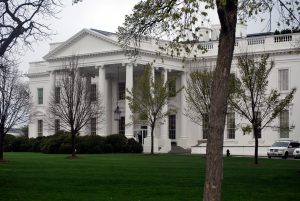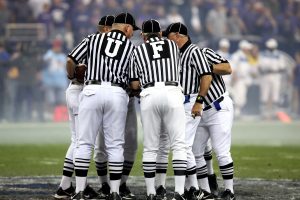Author: Jarod Bona
The FTC filed an antitrust lawsuit against Facebook (now Meta Platforms Inc.). Judge James E. Boasberg dismissed it. The FTC then filed an amended complaint. And the same judge just denied Facebook’s motion to dismiss that complaint.
The FTC alleges that Facebook has a longstanding monopoly in the market for personal social networking (PSN) services and that it unlawfully maintained that monopoly through (1) acquiring competitors and potential competitors; and (2) preventing apps that Facebook viewed as potential competitive threats from working with Facebook’s platform.
The FTC’s first claim asserts that Facebook monopolized the market through (1), above—acquiring companies (especially Instagram and WhatsApp) instead of competing. The FTC’s second claim includes both (1) and (2), the interoperability allegations, and invokes Section 13(b) of the FTC Act, which allows the agency to seek an injunction against an entity that “is violating” or “is about to violate” the antitrust laws.
The Court permitted the FTC to go forward with both claims, but also concluded that the facts from the interoperability allegations happened too long ago to fit into Section 13(b)’s “is violating” or “is about to violate” temporal requirement.
You can read the play-by-play of the opinion elsewhere or, even better, read the actual decision. My purpose with this article is instead to offer some observations about the opinion and broader antitrust litigation issues.
Direct and Indirect Evidence of Monopoly Power
The FTC argues that it has alleged both indirect and direct evidence of Facebook’s monopoly power. But because the Court concluded that the FTC had adequately alleged indirect evidence of Facebook’s monopoly power, it didn’t need to analyze the direct evidence of monopoly power.
The only reason I am bringing this up is because most monopolization cases focus on indirect evidence of monopoly power—i.e. relevant market definitions, market share, barriers to entry, etc.— so many people don’t consider that a plaintiff can also satisfy this element through direct evidence of monopoly power. For example, if a plaintiff can prove that a defendant is engaged in supracompetitive pricing, it is showing direct evidence of monopoly power. And in an antitrust claim against a government entity, the plaintiff may be able to show directly that the public entity is a monopolist as a result of government coercion.
Notably, the Court dismissed the last FTC Complaint against Facebook for failure to allege monopoly power. Here, the Court concludes that “the Amended Complaint alleges far more detailed facts to support its claim that Facebook” has a dominant share of the relevant market for US personal social networking services.
In reaching this conclusion, the Court agreed with the FTC that Facebook’s dominance is durable because of entry barriers, particularly network effects and high switching costs.
Anticompetitive Conduct
The alleged anticompetitive conduct consists of a series of mergers and acquisitions. Within antitrust and competition law, you typically hear about antitrust M&A in the context of Hart-Scott-Rodino filings and direct merger challenges by the FTC or DOJ.
Courts will sometimes conclude that mergers and acquisitions are a means of exclusionary conduct by a monopolist. As in the present case, that can come up when a company that dominates a market confronts a potential competitor and must decide how to respond. Sometimes the monopolist will compete better—reduce prices, improve quality, etc. That’s the way competition works. But in other situations, the monopolist might solve its problem by dipping into its cash or stock and remove the threat to its monopoly profits by buying the nascent competitive threat.
You could also imagine a scenario in which a monopolist engages in exclusionary conduct by going vertical and purchasing either a supplier or customer in a context in which such doing so makes it difficult for the monopolist’s competitors to achieve economies of scale. This can be similar in effect to an exclusive-dealing arrangement.
Harm to Competition
The FTC, of course, must allege harm to competition. The standard harm to competition is an increase in prices or a decrease in quality—which are two sides of the same coin. But these aren’t the only harms to competition that a plaintiff can allege.
Here, of course, the FTC is asserting an antitrust claim centered on purchase of Instagram and WhatsApp, which were free before and after the acquisitions. And the Facebook social network site is, of course, also free.
But the Court concluded that the FTC did, in fact, allege harm to competition. The FTC alleged “a decrease in service quality, lack of innovation, decreased privacy and data protection, excessive advertisements and decreased choice and control with regard ads, and a general lack of consumer choice in the market for such services.” And the FTC emphasized the lower levels of service quality on privacy and data protection resulting from lack of meaningful competition.
The Court accepted these allegations as sufficient harm to competition: “In short, the FTC alleges that even though Facebook’s acquisitions of Instagram and WhatsApp did not lead to higher prices, they did lead to poorer services and less choice for consumers.”
The question of whether less choice is sufficient harm-to-competition to support an antitrust claim has been controversial over the years, but Courts are increasingly permitting it.
Previously Cleared Transactions
Facebook understandably grumbles that the FTC previously cleared through the HSR process the two transactions that it now complains about. But the Court rejects this argument because it says the “HSR Act does not require the FTC to reach a formal determination as to whether the acquisition under review violates the antitrust laws.” And, in fact, an HSR approval expressly reserves the antitrust enforcers the right to take further action. It doesn’t seem fair, but that’s the way it is.
 The Antitrust Attorney Blog
The Antitrust Attorney Blog












